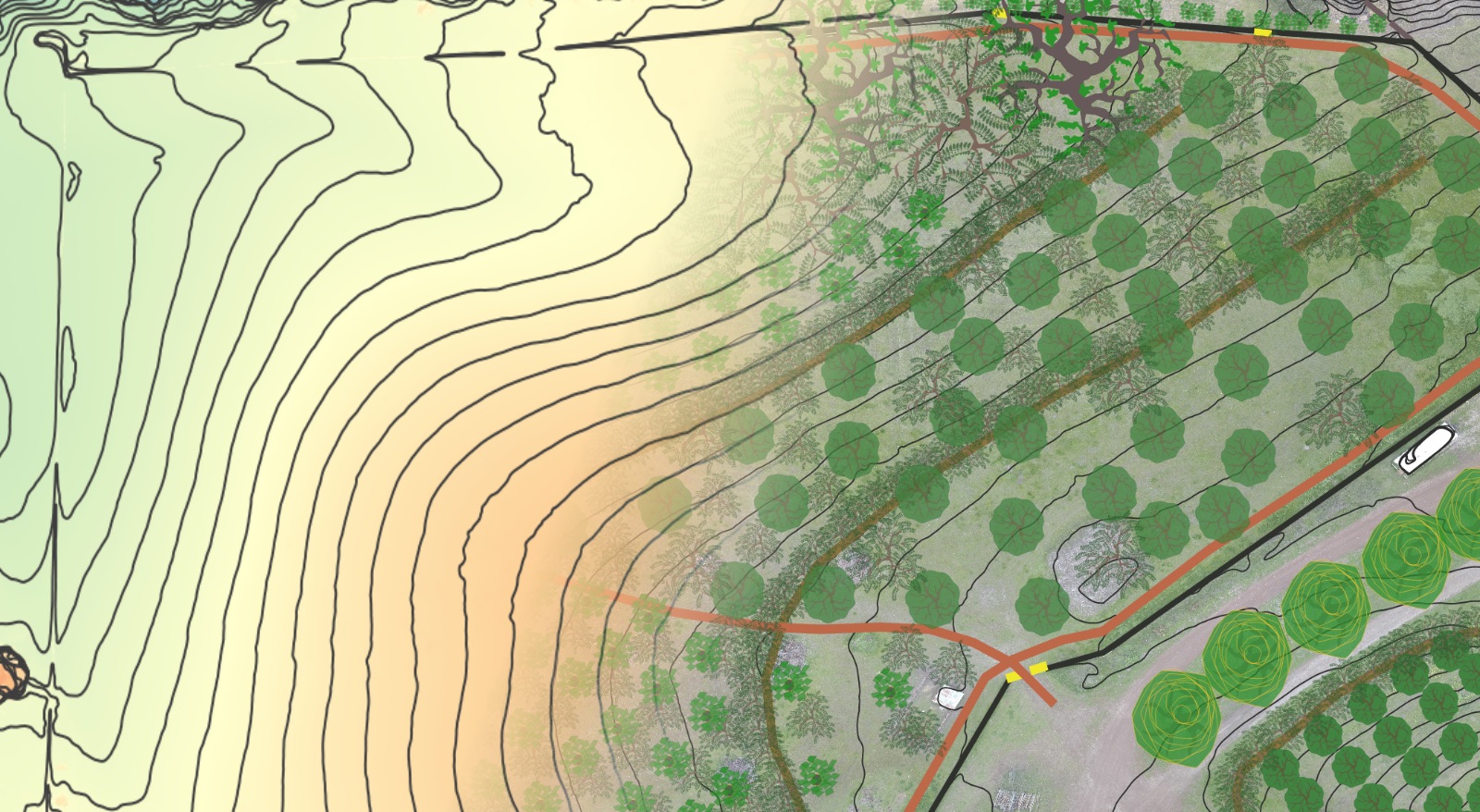Your cart is currently empty!

Foundational Site Assessment
Location: Templeton, CA
Land & Climate Characteristics: The property is located on the toe of a secondary ridge just above the primary valley bottom below. The majority of the property acreage lies below the leveled pad where the Main Residence is located, consisting of slopes that range from 13% – 70% grade. Average rainfall of 17.53 inches per year, with approximately 1.5 million gallons of water landing on the property per average rain year, with an additional estimated 0.5 million gallons running onto the property from uphill neighboring properties. Fine clay-loam soils with low fertility, low permeability, and moderate to high runoff potential.

Client’s Foundational Site Assessment Objectives: The landowners wish to rehabilitate a degraded plot of land and develop a climate-appropriate regenerative homestead with the following major goals:
- Create a safe and healthy place to live and for family to gather,
- Grow as much of their own food as possible,
- Rehabilitate a degraded landscape into a lush example of climate-appropriate living,
- Adopt and care for rescue livestock animals.
Foundational Site Assessment Key Takeaways
- Water
- High cost of domestic and irrigation water. Domestic and irrigation water for the property is sourced from Atascadero Municipal Water District and currently billed in the residential tiers at $.00270 – $0.00810 per gallon depending on monthly usage levels.
- High amount of surface runoff, with one major erosion area. Of the approximately 1.95 million gallons of rainwater that lands on and runs onto the property during an average rain year, an estimated 700,000 – 1,200,000 gallons (35% – 66%) is lost from the property as runoff. At the Atascadero Mutual Water Company’s current equivalent residential usage tier rate of $0.00610/gallon, this equates to an average of $4,300 – $7,300 worth of water that is being lost annually. A portion of the runoff is being directed onto the neighbors property to the south where severe erosion is developing. This run-off is also a drain on soil fertility, as it removes the organic matter and fine soil particles that are the backbone of a healthy, well-structured soil with every passing year
- Access
- Minor access and fencing alterations were recommended – primarily the addition of specific surface cross drains to improve hardscape drainage and turn run-off water into an asset instead of a liability (currently creating a headcut in the neighbor’s pasture).
- Living Systems
- Lack of perennial vegetative cover on the pastures, which contributes significantly to the runoff issues noted above, which guarantees decreasing soil fertility with each passing year. Living root mass is the most effective means of infiltrating water into the soil where it can be productively used by plant roots and soil biota.
- Soil compaction due to loss of soil structure, and thus decreasing water infiltration and water storage capacity. The pore spaces that are created in a healthy, living soil from plant roots, the exudates they produce, and the soil biology they help to protect and sustain are diminished or gone entirely in some places.




